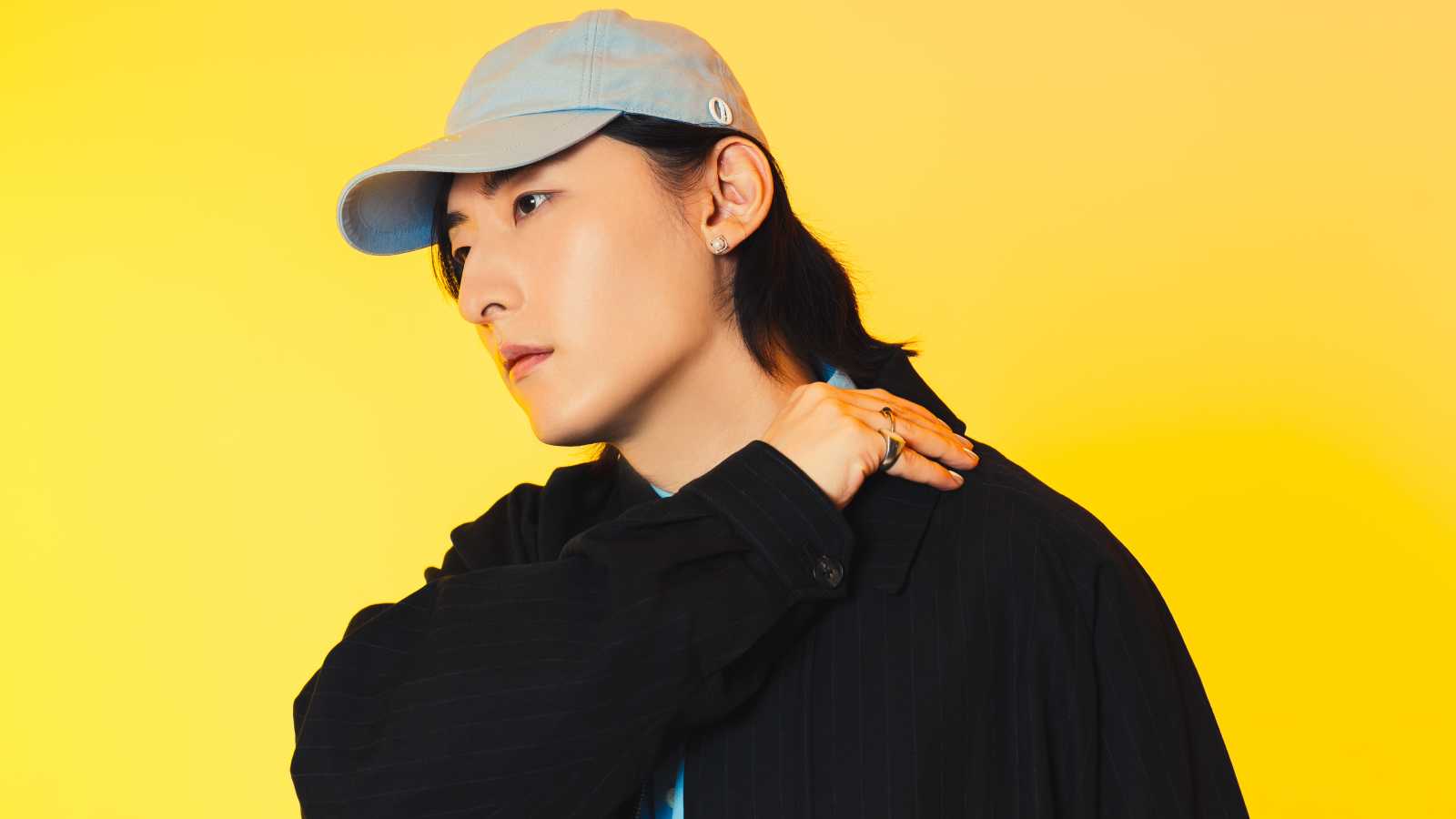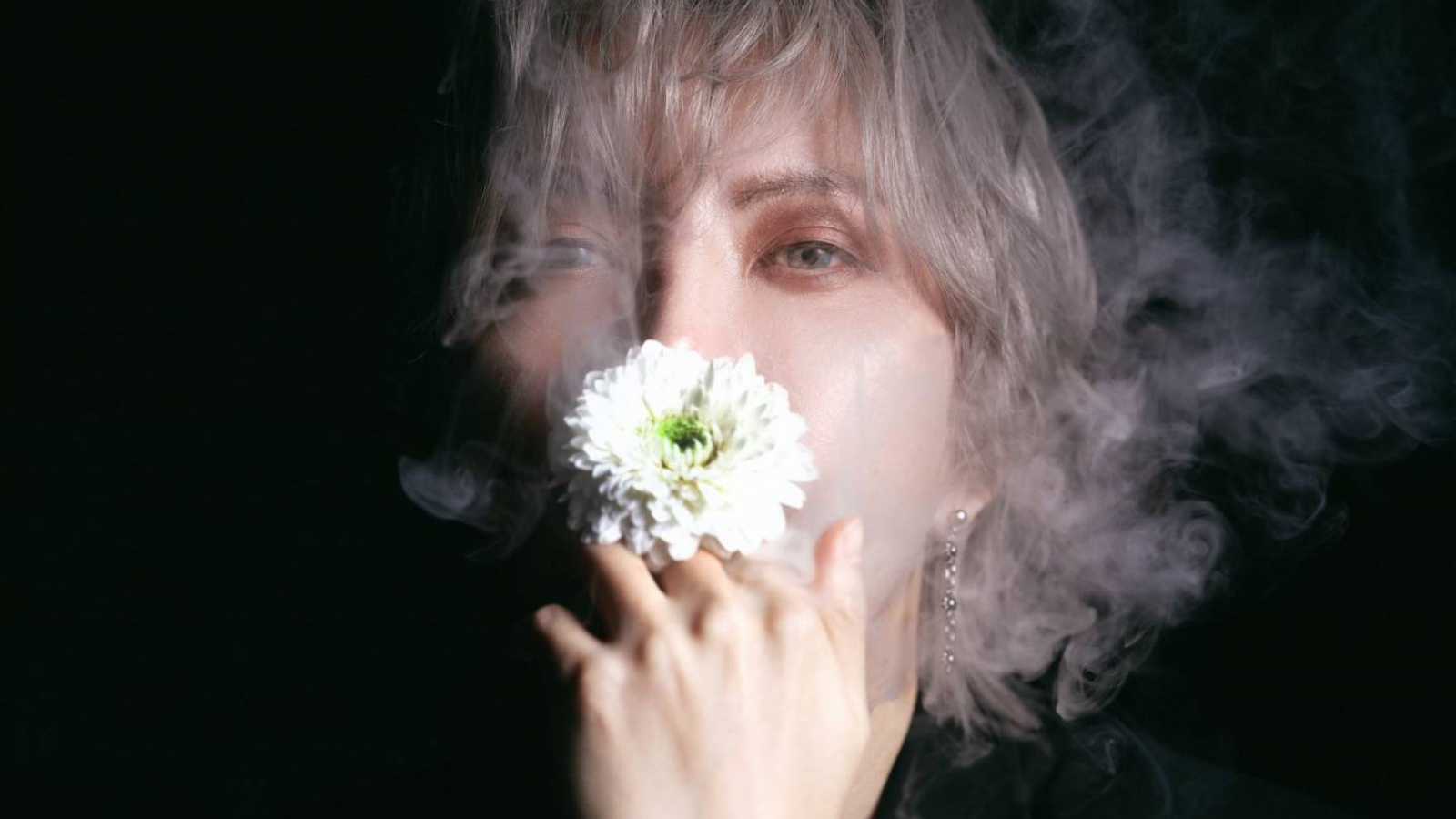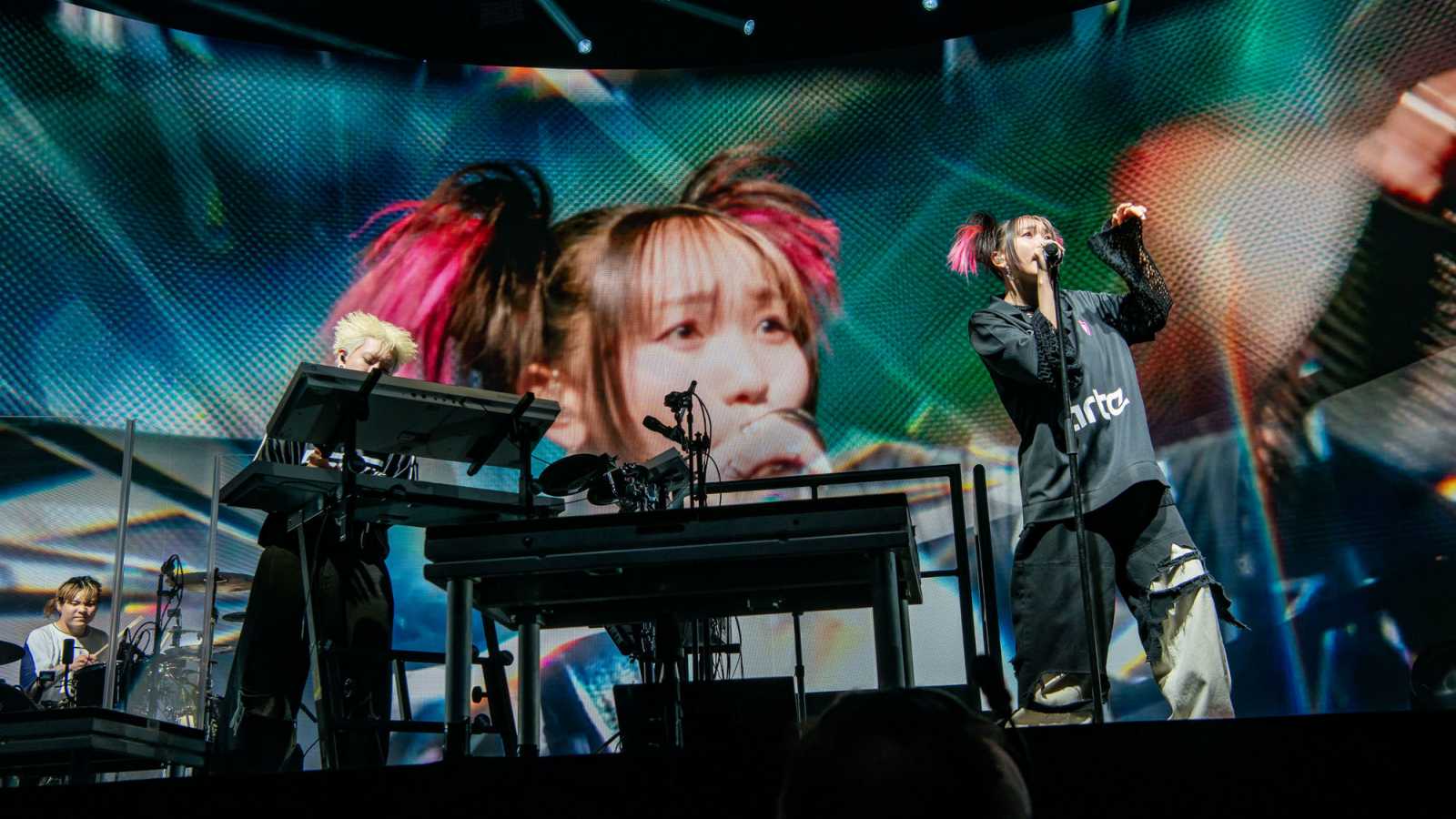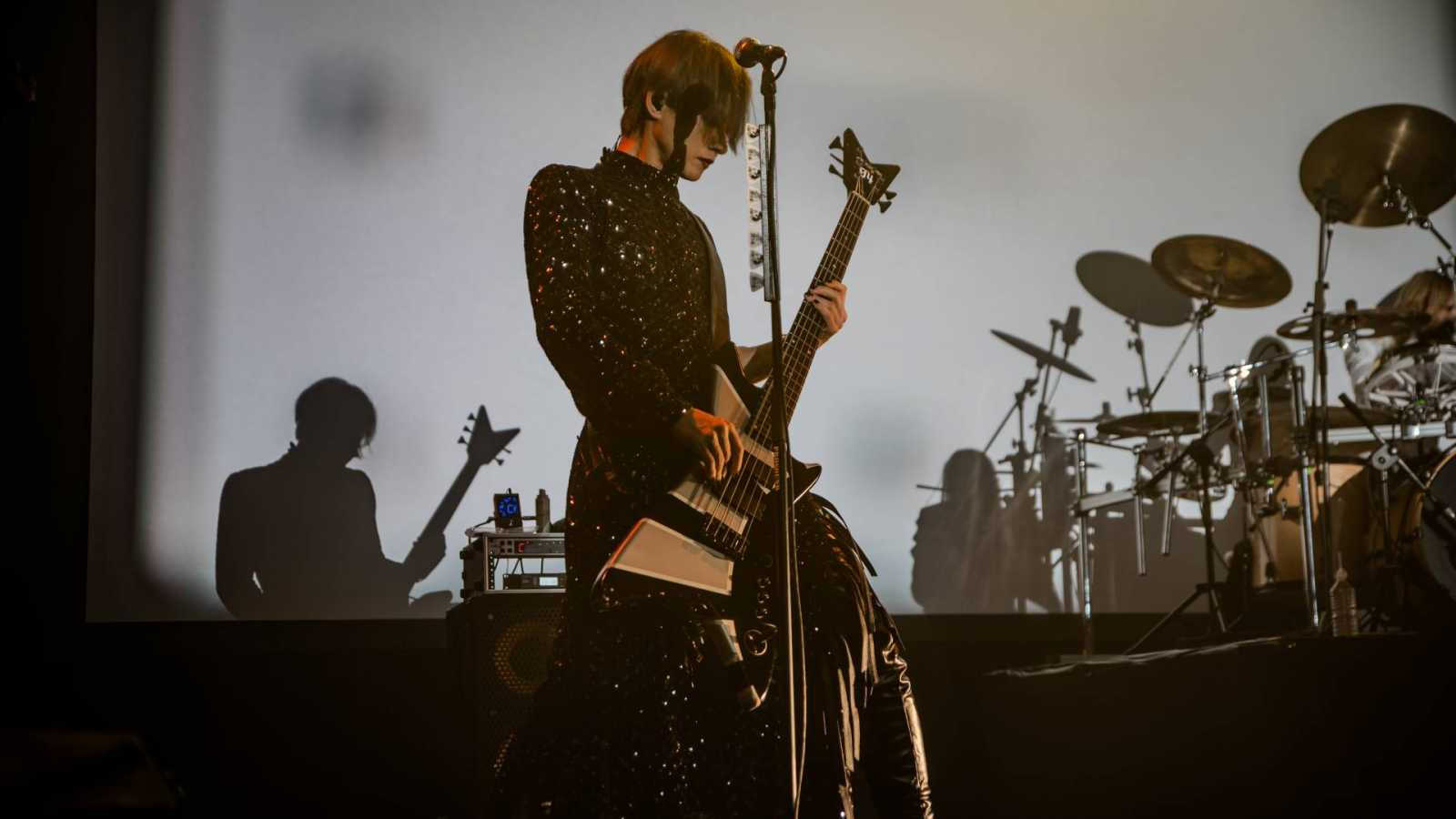During MUCC's European tour, JaME followed the band to six concerts in Finland, Sweden and Denmark, looking for the recipe of their charm.
In October 2009, after two and a half years of waiting, it was time for MUCC to return to conquer Europe with their one-man tour, MUCC in EURO 2009. The group performed in seventeen different European cities, most of which they were visiting for the first time. We couldn’t miss the chance to follow the band during this long-awaited tour, so we were present at six concerts of the tour: in Tampere on October 6th, Helsinki on the 7th, Malmo on the 8th, Stockholm on the 10th, Gothenburg on the 11th and Copenhagen on the 13th.
Crowds of different sizes had gathered in the North European cities: the number of people in the audience varied, from the full houses Tavastia in Helsinki and Klubben in Stockholm to less than a hundred in Malmo. The atmosphere in the lines for the concert was warm and there was expectation in the air: fans clearly had high anticipations for MUCC’s arrival to Europe. Last summer, people in Helsinki and Gothenburg had the chance to enjoy the band’s festival performances. In Gothenburg there were a lot more people looking like regular metal fans than usual at J-rock concerts, and male voices were clearly heard in the shouts of the audience. Otherwise, the audience was typical for J-rock concerts: girls dressed with influence from Japanese street styles, with single boys among them.
There were slight differences between the concerts in different cities, but in general the gigs followed a similar structure. The doors opened in time, the audience moved in. The venues where MUCC performed were typical rock clubs for a few hundred people. The crowd that had gathered in front of the stage waited for the start while chatting, nervous and watching the roadies. As the starting time got closer, the “MUCC!” shouts grew stronger and more frequent.
The excitement reached its peak when the lights went out. The background music stopped and the peacefully mystical SE Kyuutai started. The band walked onto the stage in familiar order: drummer SATOchi, bassist YUKKE, guitarist Miya, each greeting the audience quickly before taking his place. Tatsuro, the vocalist, let the crowd wait for him - he arrived onto stage just as the first song, Houkou, started. The energetic song launched the gig: the rhythmic guitar riffs made the audience bounce and they joined in the howling choruses with enthusiasm.
The song paused for a while after the first two verses, giving the band time to greet their audience. SATOchi made the crowd shout from behind his drums, Miya toyed with his guitar at the front of the stage, Tatsuro held his microphone out to the audience, and YUKKE smiled in the background. Then the riffs took over again and it was time for the guitar solo, during which both Miya and YUKKE had their moments in the spotlight. After the song ended, shouts filled a venue that was full of happy faces. The powerful starting song created a strong sense of presence that was worth a lot to the fans who had been waiting for the band.
The following song was the slightly more peaceful and melodic Hide and Seek. The strong guitar riffs allowed the crowd to mosh while the beautiful vocal melodies made the atmosphere more sensitive. The band made the song come to life with their calm presence on stage, each member concentrating on his own instrument. Tatsuro urged the audience along with his gestures. During the guitar solo, it was again time for Miya and YUKKE to shine together.
The transition to the next song was impressive; the heavy last bars of Hide and Seek were followed by the delicate intro of Ageha, during which everything seemed to stop. The start of the song was also visually very impressive. The lighting accentuated the frozen moment, and Tatsuro raised his hand above his head and directed his gaze upwards before he sank back down again to headbang on the level of his knees with his arms spread to his sides. The song was released as a single in fall of 2008, and therefore it was surely one of the most awaited songs of the evening, which could be seen in the responsive reaction of the audience when they had the chance to headbang with the band. The straightforward heaviness and penetrating force were definitely the strengths of the song as a live performance.
The electronic pattern continued when it was time for Fukurou no yurikago. Since the release of the album Shion, the song has been a permanent part of MUCC’s set list, which is easy to understand when you hear it live. Its style differs a lot from the rest of their songs, which is highlighted when you hear it among their newer material. The guitars are lighter and Tatsuro’s vocals are in a higher pitch, and the electronic elements are clearly audible. The floating melody and the onslaught of drum beats really energized the audience, and the band’s performance was delightful to follow. The level of relaxation made it clear that the band really enjoyed playing this song.
Lemming started with SATOchi’s rocking drums and were later joined by the guitar and then bass. The intro was extremely catchy, and the mood was reflected in Tatsuro’s exceptionally wild dance movements. In Malmo, the picture of the enthusiastically moving vocalist was painted in the minds of everyone in the audience. The song is best defined by its energetic guitar riff that is easy to go crazy with. A nice detail is also the part before the guitar solo, where Tatsuro sang "la-la-la."
Then it was time for the first MC. Tatsuro introduced the band, saying "We are MUCC from Japan! Thank you for coming tonight!" He also cheered up the audience by greeting them in the local language: "God kväll!" (‘Good evening!’ in Swedish.) It brought a smile to every face in the audience. The vocalist’s speaking was fumbling and unsure, but in an adorable way. He kept stopping as if to remember what he was saying and paused to think, which evoked bursts of laughter from the audience. However, Tatsuro wasn’t put off at all, and laughed as well. The audience replied with friendly shouts, clearly appreciating the efforts of the vocalist.
It was impossible to hold still when Tatsuro picked up his harmonica. He toyed with it in a teasing way and asked, "Are you ready to dance?" YUKKE switched to his upright bass, and the joy of the audience was let loose. It was time for FUZZ, a single release from 2008, which is an absolute live hit among MUCC’s songs and therefore probably the most awaited part of the gig. The response to the song was enthusiastic: the jumping and cheering audience was an impressive sight, and Tatsuro made it even wilder with his shouts and expressions. During the fast-paced guitar solo, Miya took his place at the front of the stage while Tatsuro teased the front row. YUKKE’s playing was enjoyable to watch; the bassist handled his instrument as if it were his dancing partner. When the song ended, the audience burst into a storm of applause.
The danceable mood continued with the following song Oz, which started with an electronic intro. Like a lot of other songs on the album Kyuutai, this song is carried by a strong guitar melody that gives Miya a chance to shine. The rhythmic and strong drums led the chorus, and the audience sang along. Tatsuro’s colorful gestures and a funny small hand movement that he constantly repeated during the second chorus of the song livened up the performance. The rhythm and melody of the song were absorbed deep into the body and limbs, and therefore it worked perfectly in sustaining the energetic mood.
There was little variation in MUCC’s tour set list, but the eighth song of the gig, the band alternated a little. In Tampere, Malmo, Gothenburg and Copenhagen, the band played Kanariya, the B-side of Sora to ito. The song was brought to life, with the soft riff played by YUKKE on his upright bass - hearing the first notes made the audience cheer. The jazzy song differed from the other songs on the set list and so brightened the mood. The variation between the straightforward verses and the melodic chorus supported by the strong bass sound gave a catchy swing to the song, which made it one of the highlights of the concert.
In Helsinki and Stockholm, Kanariya was replaced by YUKKE’s composition Fuyuu from the album Kyuutai. Its soft and floating melody gave the concerts a subtly light mood. The harmonica was also heard in this song in the form of a tasty and sharp solo. When the song ended, Tatsuro bowed lightly to thank the audience with a gentle smile on his face.
After the song ended, the audience screamed loudly, but Tatsuro gestured for them to quiet down. The first words of hanabi raised joyful screams that stopped quickly when the audience concentrating on listening to the song. The calm mood relaxed the mind, and shivers were unavoidable when Tatsuro’s voice filled the venue. The song built at first on the guitar’s soft accompaniment, then sharply rhythmical drums heralded the melody change. The dreamy calmness switched to a joyful atmosphere as the tempo rose and the bass stepped midway through the song. The beautiful mood lasted until the end, and everyone was smiling.
Next, Tatsuro cheered up the audience again with a short MC. He complimented and thanked the audience, sometimes in three languages: "Thank you! Arigatou! Kiitos!" He promised the band would come back to Helsinki with the following words: "I... we promise to come back again - promise! Everybody come back, please!" The audience confirmed his request with excited shouts.
Tatsuro asked the audience to quiet down once more, and the soft intro of Sora to ito started. The single, released last winter, is one of the most popular songs among the band’s newer material, and not surprisingly it received an enthusiastic response from the audience. The soft melody of the verses contrasted with the parts defined by strong guitar playing, and it was emphasized by Tatsuro’s strong and beautiful rendition. Sora to ito had a melancholic mood similar to hanabi, and having the songs follow each other created a small bubble of emotion different from the experiences felt through the rest of the live.
The mood changed again when Shiva began with a guitar riff. As a live performance, the song from the album Shion is an absolute pearl: it is fast-paced, energetic and rocking. The band didn’t miss their chance and squeezed out all that was left in their audience by moving actively on stage, trying not to hit each others' instruments. Miya’s background vocals brought depth to the melody. During the part preceding the guitar solo, Tatsuro made the crowd scream: "Say whoa!" he shouted, and the already high-spirited audience got even wilder. The positive, fast-paced melody of the song made the listeners happily jump along - and a smile was also on the vocalist’s face as he clearly enjoyed the audience’s enthusiastic reaction.
When the next song started, the mood reached another extremity. The intro, with strong drums and bass, got the audience clapping and shouting. Bouzenjishitsu is one of the most powerful live songs in the history of MUCC. The entrance of the guitar raised the tension, and if the audience hadn’t yet headbanged their wits out, they were doing it now. Tatsuro’s low vocals and the minimalistic, depressing melody settled like a pressure band across the chest; the intense bass spread the sensationto the whole body. As an experience, hearing Bouzenjishitsu live is unique, and after the song ended everyone had to catch a breath for a moment. It was also great to see that despite everything, a song as old as this had found its place perfectly among the newer songs without deviating from the theme of the concert. It kept its original mood: the energy, atmosphere and strength were as powerful as in performances years before.
The heavy mood continued with the last song on the actual set list, Ranchuu. The song has a strong role as part of MUCC’s live shows, and so on this tour the band gave an energetic performance as usual. For the same reason, it’s also one of the audience’s favorites: the variation between the strong guitar and melodic chorus gave the crowd the chance to enjoy headbanging and dancing wildly. The song paused for a while when Tatsuro continued the tradition attached to the song by asking the audience to sit down. The fans who know the band knew to expect this, the newer ones hesitated a little, but in the end practically everyone in the crowd sat down - some onto the floor, others, for lack of space into the lap of the person behind them. To Tatsuro’s instructions and SATOchi’s count, the crowd jumped back up in one wave to continue listening, even more excited. The determined last sounds of the songs were an effective ending for the first set of the gig, after which the band left the stage for a moment.
The audience stayed to wait for the encore and to think over what they had just seen and heard. Except for the two older song at the end, the set list consisted completely of the songs from the two newest albums, Shion and Kyuutai. Both of them were released after MUCC’s latest one-man tour in Europe, which made them all the more special. There were definitely people who missed the band as it was a few years ago, but you cannot help being impressed by the present band. The band on stage was self-confident but easy to approach, and it held the audience with its natural, stage-filling presence and strong awareness of their skills.
The level of experience could also be seen in the way the band adjusted its performance according to each venue and audience without the mood of the performance changing. The group was confident at bigger clubs like Tavastia or Klubben, but their skills were highlighted at the tiny Kulturbolaget in Malmo. The audience was small in relation to the popularity of a band at this level, but that was unnoticeable in their performances. On the contrary, the concerts felt really contented and warm and especially intimate for the small audience. It was easy to enjoy the live, when the band seemed to feel good on stage, being very close and devoting themselves to their audience.
An essential part of MUCC’s live performances is Tatsuro’s extraordinary charisma. With his gestures and presence, he brought new depths and meaning to the songs. The possibility of seeing more concerts in a row gave the chance to observe the other three members as well, which was a valuable experience. YUKKE’s positive stage personality was charming: the bassist focused on his playing with a lasting smile on his face, withdrawing himself from reality once in a while. Miya’s playing was concentrated and entertaining. He had his own silent show, and the expressions of the guitarist were a valuable sight. Worth noticing was the seamless cooperation between the guitarist and bassist: while Tatsuro and SATOchi concentrated on their own parts, Miya and YUKKE created a strong base. During the lives, the drummer was naturally more in the background, but when eye contact allowed, SATOchi’s playing was very enjoyable to watch. The drummer's style was unique and fascinating.
Waiting for the encore, the crowd spent their time quietly or chatting, occasionally screaming. In Helsinki and Stockholm they sang - maybe hopefully - the melody of Yasashii uta. After their break, the band returned to the stage and the audience burst into screams. In Copenhagen, the crowd shouted loudly, requesting Libra, but neither it nor Yasashii uta were heard. However, MUCC faced the requests showing a sense of humor: when "Libra!" echoed from the audience, Tatsuro pretended not to understand; he pointed to his chest and asked: "Nip?"
The start of the encore was always the most hilarious part of the concert. In Tampere, Tatsuro appeared on stage with a bottle of Salmiakki Vodka, a rather strong Finnish liquor, then offered it to each of the members. Their faces were worth seeing after they had sipped the drink: the expressions were somewhere between surprise and disgust. Even Tatsruo, acting brave, had to cough a little after drinking. Meanwhile, the audience was crying with laughter, and the crowd cheered even more when the vocalist asked them, "Do you like Salmiakki?"
The beginning of the encore was also time for amusing comments. In Helsinki and Gothenburg, Tatsuro delighted the audience by telling them, "I'll teach you Japanese!" In Helsinki he taught the word ‘edamame,’ in Gothenburg the word ‘bikkuridonkii’ (Bikkuri Donkey) - but, polite as he is, he skipped mentioning what the words meant. Then the doubts of those who didn’t understand Japanese were raised, and yes, those words might be useful if you’re wandering in Japan with an empty stomach and are looking for soy beans or a hamburger restaurant!
The three other members had the chance to give their comments during the encore. In Gothenburg, Tatsuro gave the microphone first to YUKKE, who introduced himself: "Do you know me? I’m YUKKE!" Tatsuro would then comment, "Yes, we have YUKKE." After the bassist finished, the crowd started to shout Miya’s name, who gave a comment praising the city, and then SATOchi’s, whose message was: "I love you, you and you!"
As the first song of the encore, MUCC gave the audience a chance to enjoy an older favorite. In Tampere, Malmo and Stockholm the song started with a catchy bass intro that got an excited response. It was time for Saishuu ressha, a single from 2004 and still a fan favorite. In Helsinki and Copenhagen, the first song of the encore was Utagoe from the album Gokusai. The energetic song, with its soft melody, was perfect to raise the mood at the end of the concert. In Gothenburg, the audience received the sensitive and beautiful Ryuusei. They listened to the song, nodding lightly.
For the last song of the concert, MUCC offered their new single Freesia. The band had already played the song at their concert at Nippon Budokan last March, but in Europe it was heard live for the first time on this tour. It could have been a risk to play a song unknown to the audience as the last song of the live, but the atmosphere of Freesia was perfect. The intro was soft and calming, the melody flowing, and the guitar brought sharp energy. The varying melodies and moods made the song interesting to listen to, and the band’s performance was deep and fragile. The audience lost themselves in the soft, sad sound of Freesia. The song ended with Miya’s guitar and Tatsuro’s humming vocals creating an atmosphere isolated from reality. After the song ended, the band thanked and said goodbye to their audience, and then withdrew from the stage.
The last notes of Freesia were still floating in the air when the crowd started to leave the venue. MUCC left an impressed and happy, even ethereal impression on their listeners. The long-time fans remembered why they liked the band so much, and newer listeners got more reason to enjoy the band. When following the band for many concerts in a row, the completeness of their performance was what impressed most. The audiences and venues changed, but the mood remained the same. MUCC’s stage performance is unique and enjoyable - this tour left its mark on masses of listeners who yearn to see the band again.
Concerts:
2009/10/06 Klubi, Tampere, Finland
2009/10/07 Tavastia, Helsinki, Finland
2009/10/08 Kulturbolaget, Malmo, Sweden
2009/10/10 Klubben, Stockholm, Sweden
2009/10/11 Brewhouse, Gothenburg, Sweden
2009/10/13 Lille Vega, Copenhagen, Denmark
Set list:
Intro (Kyuutai)
Houkou
Hide and Seek
Ageha
Fukurou no yurikago
Lemming
-MC-
FUZZ
Oz
Kanariya (Tampere, Malmo, Gothenburg, Copenhagen) / Fuyuu (Helsinki, Stockholm)
hanabi
-MC-
Sora to ito
Shiva
Bouzenjishitsu
Ranchuu
Encore:
-MC-
Saishuu ressha (Tampere, Malmo, Stockholm) / Utagoe (Helsinki, Copenhagen) / Ryuusei (Gothenburg)
Freesia
JaME would like to thank Twisted Talent and Live Nation.
Pictures 1-4 are from Tampere, taken by Katrin Borgersen. 5-14 are from Helsinki, taken by Tiina Hirvonen, and 15-20 are from Stockholm, taken by Maija Haka.






















